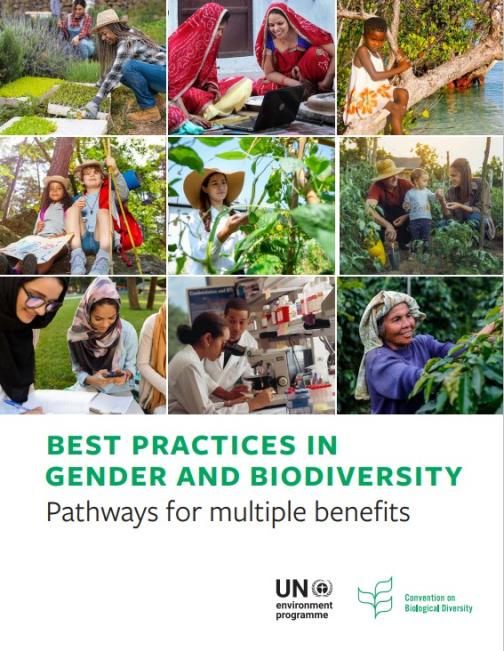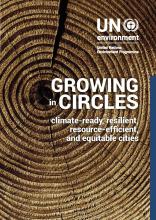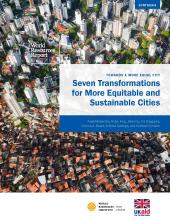Report

BEST PRACTICES IN GENDER AND BIODIVERSITY
Pathways for multiple benefits
To achieve gender equity and protect biodiversity, initiatives that emphasize inclusion and innovation must be prioritized. This collection of best practices shows how targeted action is critical to producing transformative results for biodiversity.
The international community is increasingly recognizing the range of ways in which gender differences and inequalities shape how we take decisions and our impact on the natural world. Deeply entrenched social norms advantage more powerful and dominant groups over others, and most often men and boys over women and girls. Tackling these long-standing inequalities and structural barriers is a complex process that requires dedicated attention and resourcing.
This UNEP and Convention on Biodiversity publication demonstrates how such targeted action is also critical to achieving sustainable and transformative results for biodiversity. It aims to strengthen the evidence base on gender-responsive biodiversity policy and support organizations, indigenous people, local communities and stakeholders to integrate gender considerations in the implementation of the post-2020 global biodiversity framework. The report includes ten detailed case studies of gender-responsive biodiversity policies and practices, as well as 27 shorter examples.
READ MORE

Growing in Circles
This report identifies ways for cities to transition to a circular economy to increase resource efficiency and address climate change.

Her City
This guide provides urban leaders a methodology to mainstream gender equity in urban planning and design.

Seven Transformations for More Equitable and Sustainable Cities
This synthesis of the World Resources Report recommends seven transformations to create a new dynamic for durable, cross-sectoral, city-wide change and provides a roadmap to more equitable access to core urban services.

How Ningbo is Paving the Way for Sustainable Development and Tourism
With the revitalization of Hangzhou Bay Wetland Park, Ningbo is proving the value of biodiversity-focused urban development.
